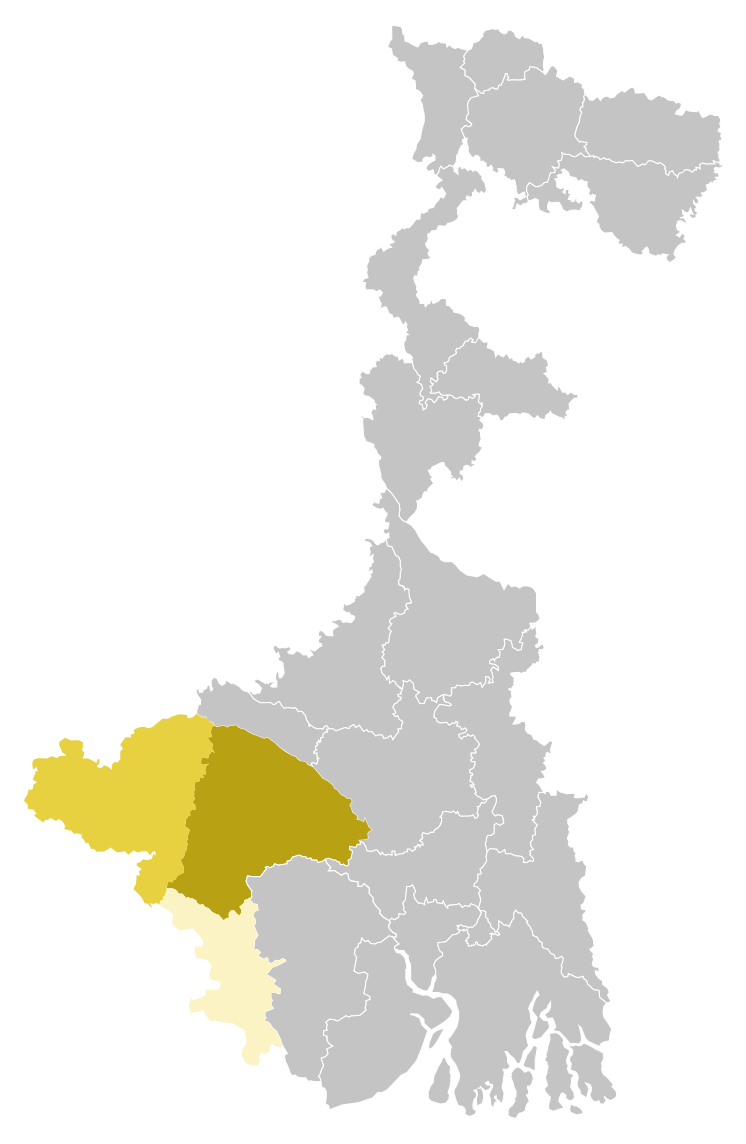Textiles of Bengal
Vibrant, handcrafted Bengal textiles
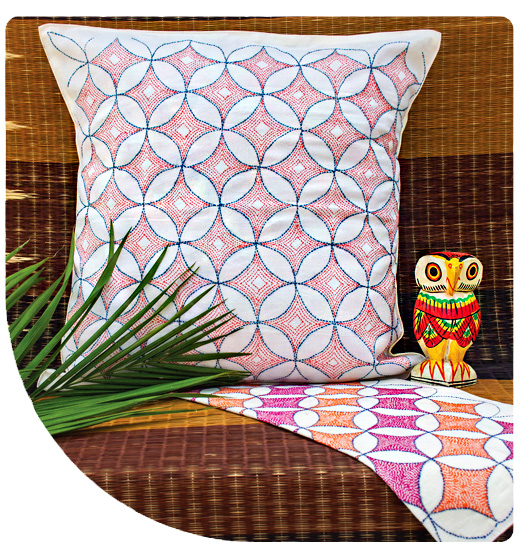
Textiles
West Bengal is renowned for its high-quality weaving and refined threadwork. The state's natural landscape, blessed with rivers and fertile lands, provides excellent raw materials, particularly fine-quality cotton. Local communities, using handlooms known as "tant" in Bengali, create elegant textiles with intricate threadwork. The simplicity of their weaves and embroideries reflects the straightforward lifestyles of the maker communities. The unique Kantha work and lesser-known handloom practices further highlight the state's textile heritage.
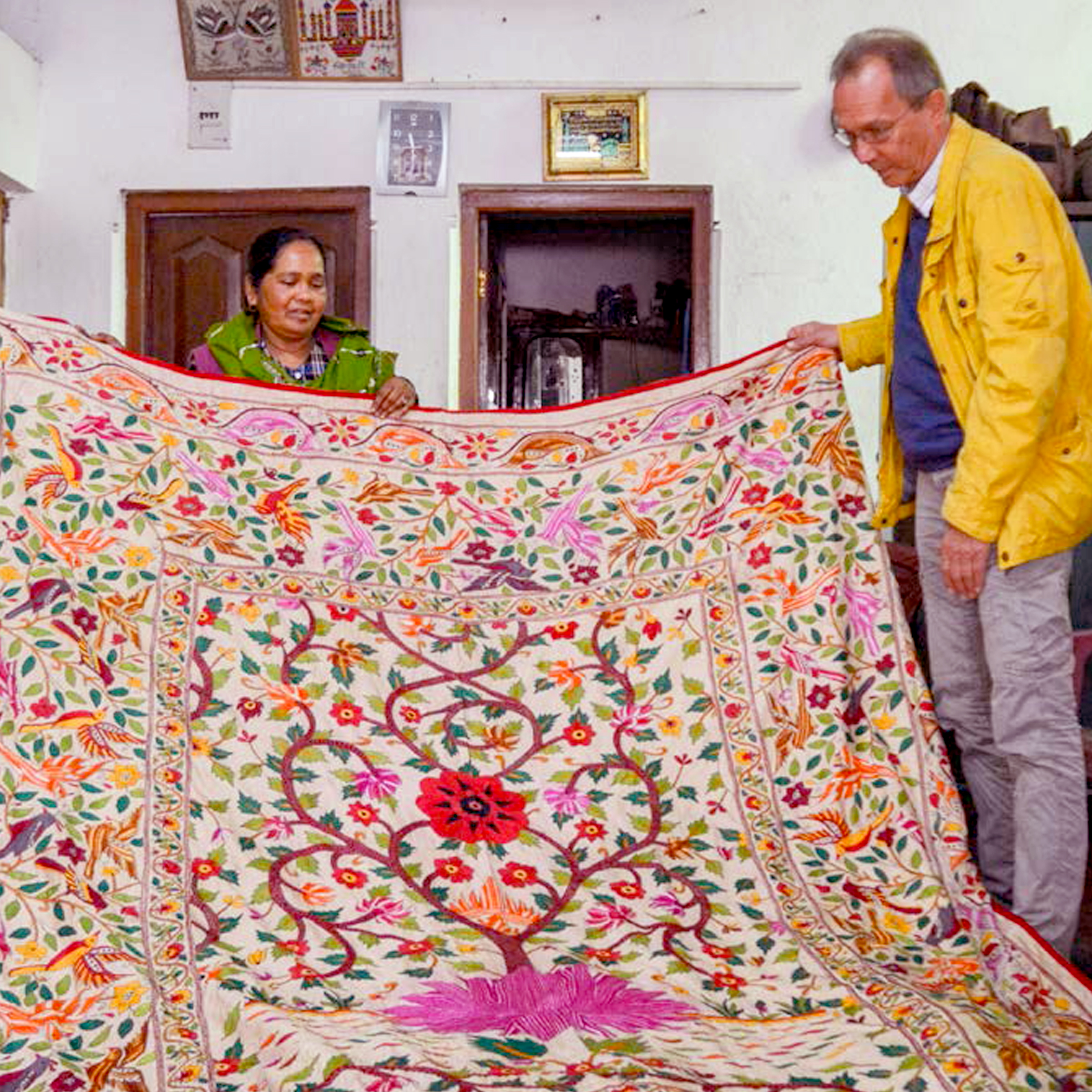
Kantha
The Kantha tradition was widespread across undivided Bengal, transcending social, economic, and religious boundaries, with roots deeply embedded in ancient techniques, processes, and aesthetics. The visionary poet and philosopher, Rabindranath Tagore, in his poignant poem "Ebar Phirao More," refers to the young prince Siddhartha as one adorned only with a Chinna Kantha (tattered Kantha) when leaving his princely home in pursuit of ultimate truth, stripped of worldly garments and possessions...
Process
Conceiving the design
Making the design
Printing the design on fabric
Embroidering the design
Washing the final product
Kantha Hubs
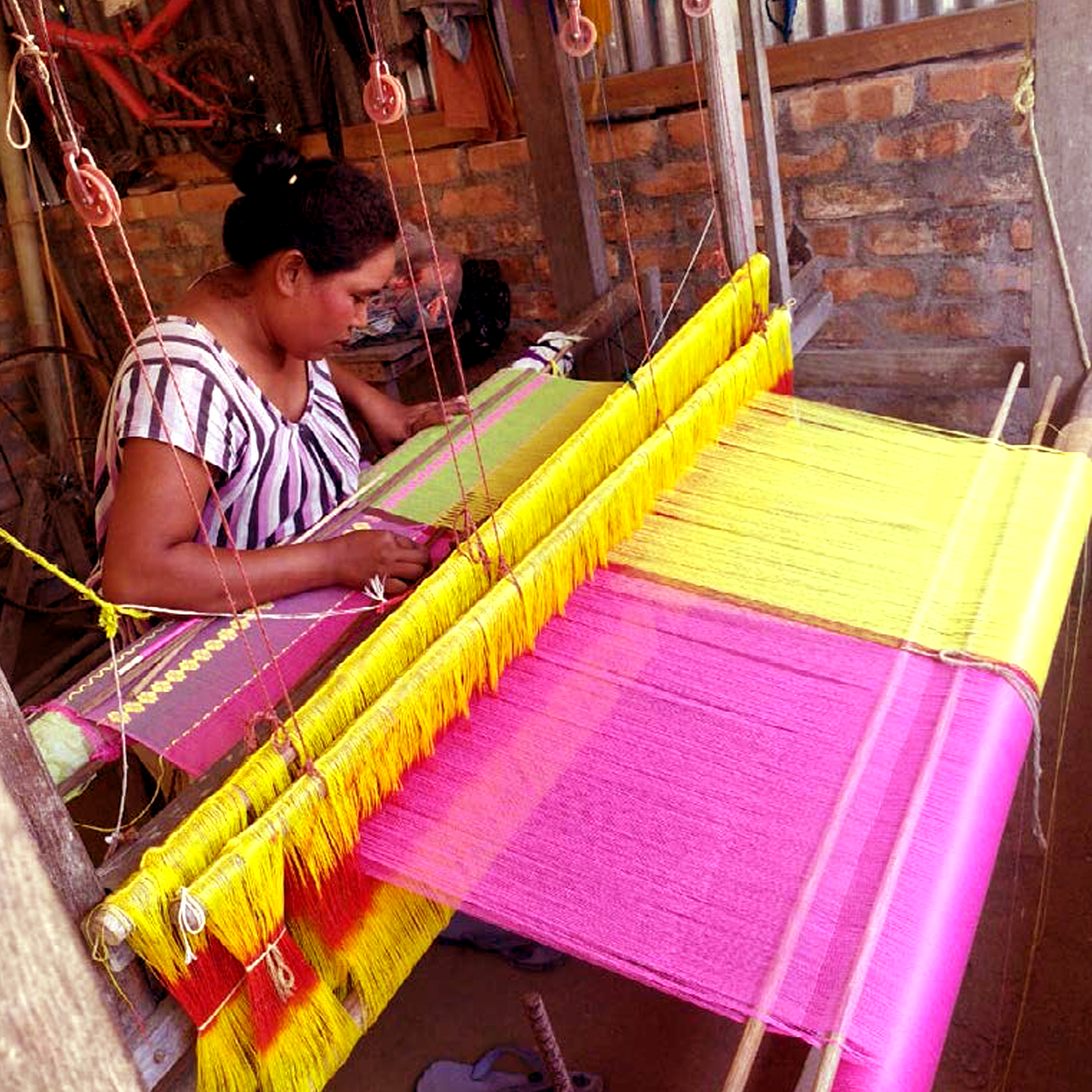
Rabha Weaving
The Rabha people, a minority ethnic community, inhabit regions across Alipurduar, Jalpaiguri, and Coochbehar districts in West Bengal. The rich weaving heritage of the Rabha community has been passed down through generations. They engage in weaving both for personal use and for selling their products within their local villages and markets. The raw materials, including threads, are sourced from Alipurduar, Assam, and Coochbehar.
Process
- The artists purchase colorured and basic threads from local markets.
- Clean the threads with rice starch and fixer for enhancing the quality and durability of the threads’ colour.
- Keep the wet threads in sunlight for drying.
- Then they roll the threads of warp in a bobbin
- Then dramming the warp outside their houses
- Then they set the warp in the loom according to the design
- Then they roll the threads of weft in a bobbin
- Then they start weaving to set the loom properly. After having a proper idea about the loom setting they start weaving.
- They make motifs by using their hand which is called extra weft.
Rabha Weaving Hubs
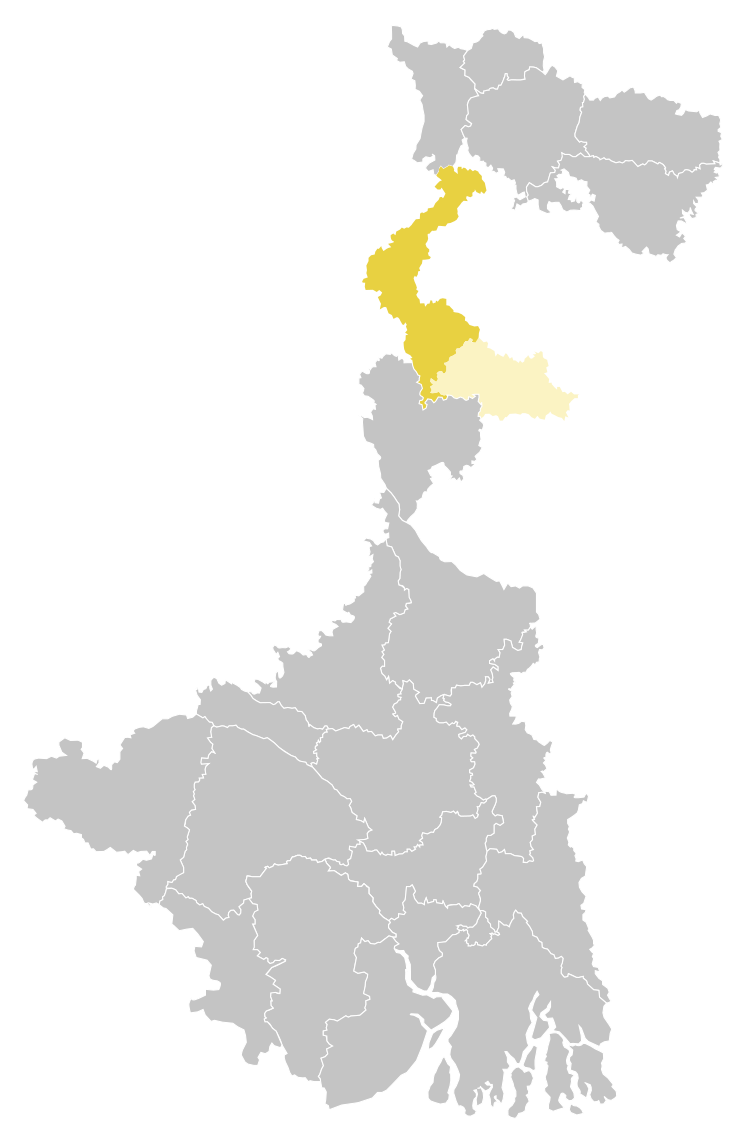
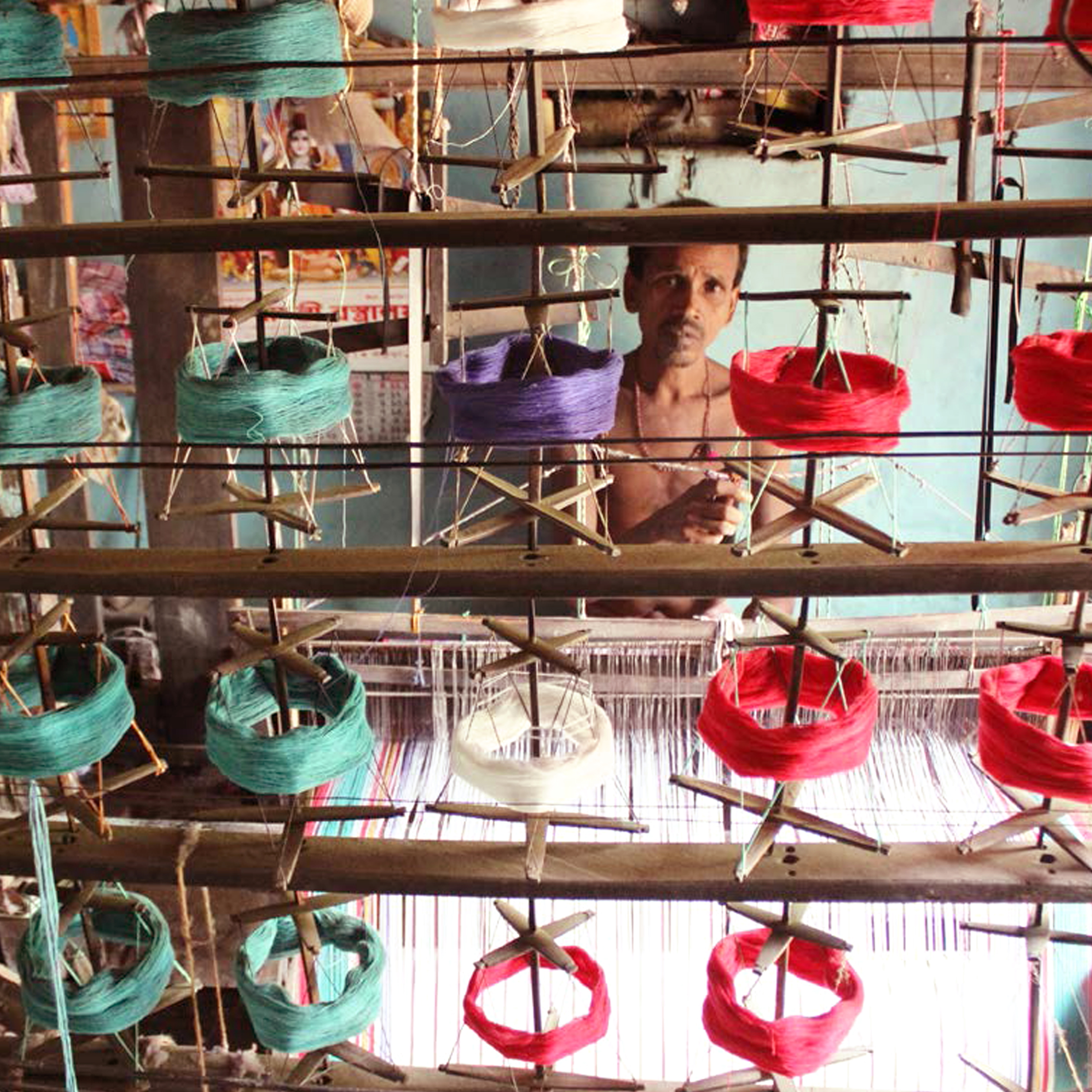
Kenjakura Tant
Kenjakura is a charming hamlet situated in close proximity to the tranquil slopes of Susunia in Bankura. The village is home to approximately 330 families of skilled weavers, whose forebears arrived and established themselves here 150 years ago. Utilizing the age-old Charkha, women in the community spin yarn with precision
Process
Textile Dyeing: Adds lasting color.
Yarn Winding: Transfers yarn conveniently.
Beam Setup: Prepares for weaving.
Denting-Drafting: Refines width, selects frames.
Intensive Weaving: Requires precise control.
Kenjakura Tant Hubs
